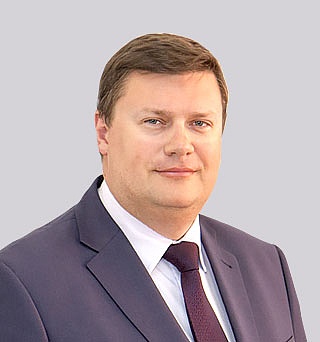Russian tax benefits for research & development engineers
5 April 2018Considerable attention is currently being paid to stimulating scientific developments in Russia, with extensive fiscal incentives offered to research & development (R&D) engineers. According to Russian tax legislation, the costs of creating new or improved products or services, which includes the costs of engineering, are included in R&D expenses.
Russian tax legislation grants benefits in respect of almost all major taxes related to the production and sale of high-tech goods. This includes assigning the rights to their R&D results to third parties.
Corporate income tax
In Russia, there is a simplified (in relation to other types of expenses) procedure for writing-off R&D expenses for profit tax purposes. Expenses for R&D related to the creation or improvement of new products and services, as well as the creation of new or improved applied technologies, methods of production and management organisation, can be excluded from the tax base for corporate income tax in full.
These expenses include: (i) the depreciation of fixed assets and intangible assets for the months they were used exclusively for R&D purposes; (ii) employees’ compensation for those engaged in R&D in proportion to the extent of their participation; (iii) financial expenses directly related to R&D activities, such as raw materials and stationery, etc; (iv) expenses for contractors’ fees; and (v) other expenses directly related to R&D, as long as they are no more than 75 percent of employees’ compensation for those engaged in R&D.
At the same time, accounting for such expenses will depend on how the results of R&D are registered.
If exclusive rights (a patent) to the results of R&D are obtained, they are either depreciated under the general procedure – the usual period during which the depreciation charges are paid, the patent validity period – or are written-off as expenses within two years. The taxpayer’s option should be established for all types of R&D pertaining to local regulation, the accounting policy for tax purposes.
If for any reason exclusive rights to the results of R&D are not registered, the development costs can be written-off in a lump-sum after the completion of the R&D programme – or the completion of individual stages of work, if such stages were specified in the company’s documentation and estimated in advance – regardless of their outcome and the use of the results. The taxpayer’s internal document report accepting the results of R&D will be sufficient for the purposes of the write-off.
For specific types of R&D that relate to priority sectors, such as nanotechnology, processing, storage, transfer and protection of information, development of methods for recycling of industrial waste, software production and many others, it is acceptable to deduct the costs incurred by the customer for works based on the actual amount of expenditure with a coefficient of 1.5. That is, if 1 million roubles is spent on development in these industries, it will be possible to claim a deduction from the tax base of 1.5m roubles.
To confirm this benefit, the taxpayer is required to submit to the tax authorities a special report in which he or she describes R&D developments, or their stages. Should there be any suspicion as to the report’s contents, the tax authority can commission an expert investigation into the report. Basically, such investigations are commissioned in order to confirm that the R&D activities submitted under this benefit refer specifically to the relevant economic branch. If a taxpayer uses some fixed assets solely in scientific and technical activities, he or she has the right to apply a special coefficient no higher than three to the basic rate of depreciation.
Another method of stimulating the development of innovation is through creating a reserve fund for future R&D expenses by the taxpayer. The reserve fund is created for specific programmes and is for a period that is not to exceed two years. Its maximum amount is 3 percent of the income from the sale of goods, works or services – that is, when calculating this reserve, so-called ‘passive income’ such as received bank interest and dividends is not taken into account. The size of such a reserve is included in the expenses that reduce the tax base for income tax on the final day of the reporting period. After the creation of the reserve, R&D costs can be written-off at its expense, and anything that does not meet the reserve is written-off in the above-mentioned general order for R&D.
Another arrangement for stimulating scientific developments is the possibility of obtaining an investment tax credit through a taxpayer performing R&D. An investment tax credit involves entering into an agreement with government authorities. On the basis of the agreement a taxpayer has the right to reduce its corporate income tax by up to 50 percent within a period of one to five years. Upon expiry of the grace period, the unpaid tax amount should be paid within the period specified in the agreement, with interest.
Russia also has a well-developed system of agreements on the avoidance of double taxation – more than 90 bilateral agreements – with virtually all developed and the majority of developing countries. Basically, such agreements provide for either a ‘zero rate’ of the profit tax on the amount of royalties paid for using the results of intellectual activity, or a reduced – 5 to 15 percent – tax rate withheld at the source of payment. Such revenues are included in the general tax base and are taxable at a rate of 20 percent.
Value added tax
The implementation of the results of R&D is exempt from taxation. This benefit is most relevant for scientific organisations that carry out R&D on the orders of third parties, or for scientific research units of large holdings that transfer their research results to production units for times when exclusive rights to such results have not yet been registered.
This benefit is granted when performing R&D related to the creation of new or improved existing products and technologies, and if any of the following is carried out in R&D: designing an engineering facility or technical system, developing new technologies or creating and testing prototypes of machines, equipment and materials.
In addition, exclusive rights to inventions, utility models, industrial designs, computer programmes, databases, topographies of integrated microcircuits, know-how and rights to use the above-mentioned results of intellectual activity on the basis of a licence agreement, are also exempted from VAT in Russia.
Contributions to state non-budgetary funds
In general, Russian organisations pay compulsory insurance contributions for retirement, and social and medical insurance to state non-budgetary funds at a rate of 30 percent of their salary. A reduced rate of 10 percent is applied to annual wages which exceed 1,021,000 roubles.
However, lower rates of insurance contributions have been set for some types of scientific organisations. Thus, a basic contribution rate of 14 percent is set for organisations which: (i) have agreements on technical and innovative activities and work in technology-innovative special economic zones (zones in Russia that are aimed at developing and introducing new technologies); (ii) develop and adapt software and databases; and (iii) are participants in the Skolkovo project (a special zone in the Moscow region where scientific organisations – those that have been founded exclusively for research activities in the field of energy efficiency and energy saving, development of nuclear, space, medical and computer technologies – receive substantial tax benefits).
Local tax legislation also includes a number of benefits for scientific organisations. Many Russian regions have special economic zones or special taxation regimes for innovation where, in addition to the above-mentioned federal benefits, the scientific organisation can also count on local tax benefits, such as corporate property tax, transport tax and land tax. These tax benefits may prove to be effective alongside privileges and guarantees for foreign investors as provided by Russian law. These are benefits for customs duties, insurance payments and income tax. As a rule, the opportunity to enjoy such benefits is associated with federal or regional investment projects or with registration in the special economic zones.
Thus, scientific activities in Russia can be very beneficial due to the existing and rather extensive system of tax incentives that stimulate R&D.










